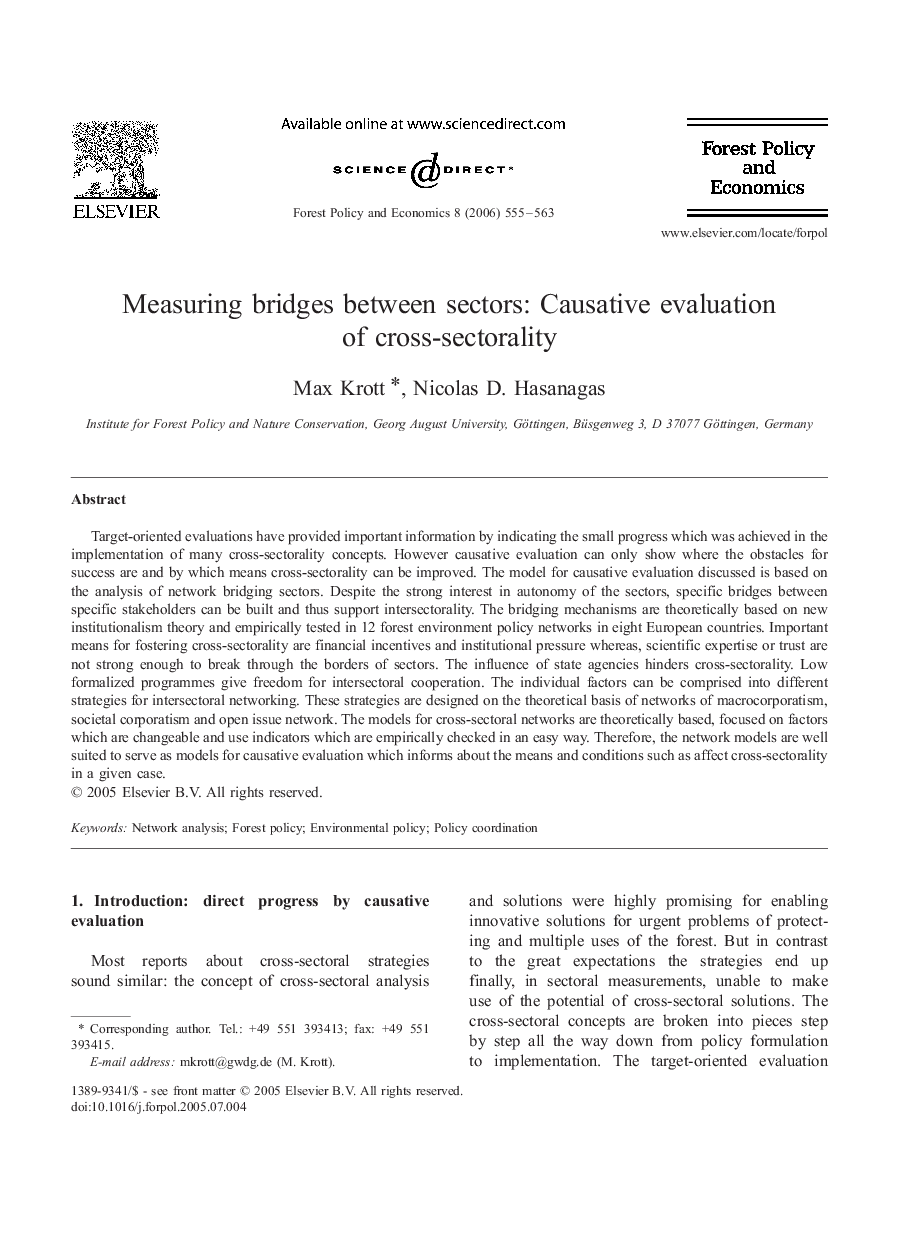| Article ID | Journal | Published Year | Pages | File Type |
|---|---|---|---|---|
| 91701 | Forest Policy and Economics | 2006 | 9 Pages |
Target-oriented evaluations have provided important information by indicating the small progress which was achieved in the implementation of many cross-sectorality concepts. However causative evaluation can only show where the obstacles for success are and by which means cross-sectorality can be improved. The model for causative evaluation discussed is based on the analysis of network bridging sectors. Despite the strong interest in autonomy of the sectors, specific bridges between specific stakeholders can be built and thus support intersectorality. The bridging mechanisms are theoretically based on new institutionalism theory and empirically tested in 12 forest environment policy networks in eight European countries. Important means for fostering cross-sectorality are financial incentives and institutional pressure whereas, scientific expertise or trust are not strong enough to break through the borders of sectors. The influence of state agencies hinders cross-sectorality. Low formalized programmes give freedom for intersectoral cooperation. The individual factors can be comprised into different strategies for intersectoral networking. These strategies are designed on the theoretical basis of networks of macrocorporatism, societal corporatism and open issue network. The models for cross-sectoral networks are theoretically based, focused on factors which are changeable and use indicators which are empirically checked in an easy way. Therefore, the network models are well suited to serve as models for causative evaluation which informs about the means and conditions such as affect cross-sectorality in a given case.
